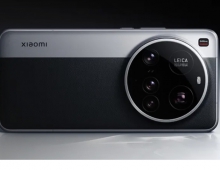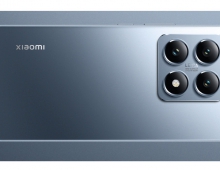
Xiaomi Achieves Strong Growth Across All Business Segments, Announces Redmi Go Smartphone and Mi Pay Service For India
Chinese smartphone maker Xiaomi Corp said on Tuesday its fourth-quarter net profit more than tripled to 1.85 billion yuan ($275.59 million), on stronger revenue.
The group recorded a strong revenue of approximately RMB174.9 billion, representing a year-on-year increase of 52.6%, among which international revenue grew 118.1% year-on-year to RMB 70.0 billion, accounting for 40% of its total revenue. Net profit for year 2018 was approximately RMB13.478 billion. Adjusted net profit (Non-IFRS Measure) grew by 59.5% year-on-year to RMB8.6 billion.
Xiaomi Founder, Chairman and CEO Mr. Lei Jun, said: “In 2018, Xiaomi continued to shine – even in the face of fierce competition from domestic and international peers – thanks to our unique and powerful “triathlon” business model. During 2018, our large home appliances business emerged from a nascent vertical to a robust business unit, and we also entered the white goods market. Besides, 2018 also marked the start of our overseas IoT business expansion. The strategies to which Xiaomi adheres, such as adopting multi-brand strategy in our smartphone business, strengthening the performance of the high-end market, accelerating the development of new retail channels and focusing on AI development and application, all yielded remarkable results during FY2018. In 2019, we officially launched the “smartphone + AIoT” dual-engine strategy. With the upcoming 5G deployment, we believe there will be more opportunities available for AIoT in the future. We expect to invest over RMB10.0 billion in the development in AIoT in the next 5 years to capture this exciting opportunity. A strong growth across all business segments in 2018 reinforces our confidence in the business and we are positive that we are able to reach our full potential in 2019.”
In FY2018, Xiaomi’s smartphones segment recorded revenue of approximately RMB113.8 billion, up 41.3% year over year, which was mainly driven by notable grown in both smartphone sales volume, and the average selling price. Compared with the 4.1% year-on-year decline of shipments in the global smartphone market, according to IDC Consulting (Beijing) Ltd, Xiaomi’s smartphone shipments reached 118.7 million units, representing an increase of 29.8% over the previous year.
Revenue from the IoT and lifestyle products segment continued to maintain a high speed of growth, surged 86.9% on a year-over-year basis to RMB43.8 billion. As of December 31, 2018, the global cumulative shipments of its smart TVs were 8.4 million units, representing a 225.5% year-on-year growth. In addition to smart TVs and laptops, Xiaomi achieved high sales performances across multiple product categories such as Mi Band, Mi Electric Scooter and Mi Robot Vacuum Cleaner.
Revenue from the internet services segment grew by 61.2% year-on-year to RMB16.0 billion. Meanwhile, advertising revenue grew by 79.9% year-on-year to RMB10.1 billion, primarily driven by continuous optimization of recommendation algorithm, and users’ increasing engagement with Xiaomi’s internet services. The MAU of MIUI increased 41.7% to 242.1 million in December 2018. In the fourth quarter of 2018, Xiaomi has successfully increased diversification of internet services revenue with over 30% of Xiaomi’s internet services revenue was from internet services outside of advertising and gaming from China smartphones.
Xiaomi adopted a multi-brand strategy for its smartphones in 2018. Xiaomi and Redmi have become independent brands since January 2019. The Xiaomi brand will focus on pioneering advanced technologies, establishing itself in the mid- to high-end markets, and building online and offline new retail channels. The Redmi brand will pursue the ultimate price-performance ratio and focus on online channels. In addition, Black Shark, Meitu, and POCO brands will target games users, female users, and tech enthusiasts, respectively. Xiaomi’s smartphone ASP in Mainland China increased by 17.0% year-on-year, smartphone ASP in international markets also increased by 9.7% year-on-year.
Xiaomi greatly enhanced the user experience of IoT devices through the empowerment of AI. As of December 31, 2018, its AI assistant had more than 38.8 million monthly active users, making it one of the most used AI voice interactive platforms in mainland China.
2018 marked the commencement of Xiaomi’s overseas IoT business expansion with smart TVs launched in India in February 2018 and were ranked first in terms of online TV shipments in this market during 2018.
International revenue surged by 118.1% year-on-year to RMB70.0 billion, accounted for 40.0% of total revenue, 12ppts higher than its contribution last year. According to Canalys, Xiaomi’s smartphone shipments for Western Europe grew 415.2% year-on-year and were ranked fourth in terms of smartphone shipments in 2018.
Its smartphone shipments for India continued to demonstrate strong growth momentum and achieved the number one market share position for six consecutive quarters. In Indonesia, Xiaomi was ranked second in terms of smartphone shipments with year-on-year growth of 299.6%.
With the upcoming 5G deployment in 2019, Xiaomi will continue to invest in the development of its open AIoT platform, which is believed that there will be more scenarios available for AIoT in the future.
To further expand its global footprint, Xiaomi will continue to enter additional markets in 2019 and replicate the success in India in other key markets such as Indonesia and Western Europe.
Meanwhile, Xiaomi will expand its IoT device-based internet services, such as TV internet services and overseas internet services, and continue to grow the services that have the potential to expand to non-Xiaomi smartphone users, such as internet finance and the Youpin e-commerce platform.
$65 Redmi Go smartphone for India

Xiaomi today held an event in New Delhi, India, to announce its first Android Go phone, the Redmi Go. T
The low-end device comes with a 5-inch 720p 16:9 screen, 1GB of RAM, a Snapdragon 425 processor, an 8-megapixel camera, a 3,000mAh battery, and 8GB of expandable internal storage. It runs the Go version of Android 8.1 Oreo.
The smartphone is available for just Rs. 4,499 (~$65).
Specs
- 12.7cm (5.0) HD Display (16:9, 380-nits (typ) / 330-nits (min) brightness, 296 PPI, 1000:1 contrast ratio, 1280x720 resolution, 72% NTSC (typ) color gamut))
- 8MP rear camera with HDR (ƒ/2.0 aperture, Single LED flash, Auto-focus, HDR, Burst mode, Countdown timer, Manual mode, Real-time filters and smart scenes mode, 1080p video shooting)
- 5MP selfie camera with AI Beautify (1.12μm large pixel, 3-element lens, ƒ/2.2 aperture, Selfie timer, HDR)
- 3000mAh high-capacity battery
- Qualcomm Snapdragon 425- Quad-core processor, up to 1.4GHz clocking speed
- Android Oreo️ (Go edition)
- Dual SIM cards +
- Expandable up to 128GB
- 1GB+8GB
- Height: 158.6mm
- Width: 75.4mm
- Thickness: 8.05mm
- Weight 181g
- 802.11b/g/n
- Bluetooth 4.1
- WiFi Direct, WiFi 2.4G
- GPS
- AGPS
- GLONASS
- Beidou
- Vibration motor
- Proximity sensor
- Accelerometer
- Ambient light sensor
Mi Pay service
Aiming to take on the likes of Google Pay and Paytm, Xiaomi also on Tuesday launched its Unified Payments Interface (UPI)-based payments application "Mi Pay" for its MIUI users in India.
The Mi Pay service will be available for all Xiaomi devices running the company's proprietary MIUI OS based on Android. The Mi Pay app is integrated within MIUI interface across SMS, contacts, scanner, app vault and settings and ICICI Bank is the payment service provider.
Users can make payments using UPI and other debit cards, credit cards and Internet banking across more than 120 banks and over 120 billers.
The payments service would also allow several utility payments ranging from phone bills, phone recharges, water or electricity bill payments.
Mi Pay UPI has been approved by the National Payments Corporation of India (NPCI) under the multi bank Application Programming Interface (API) model and it has been audited by CERT-IN empanelled auditors E&Y and Lucideus.





















